#ikuhara
Text
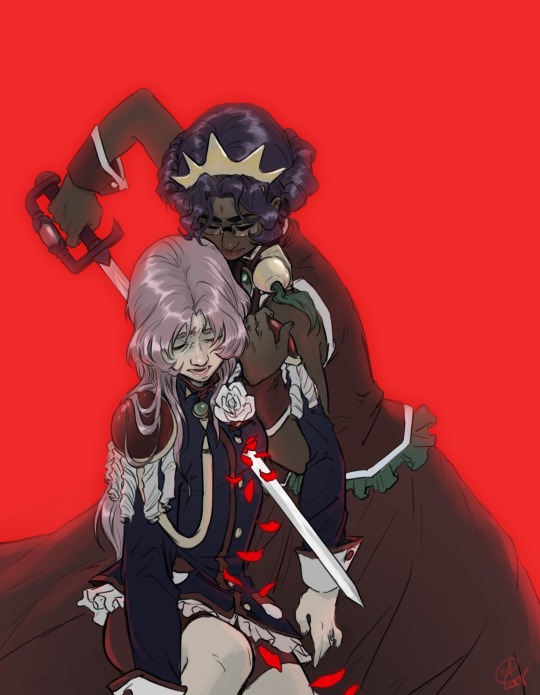
“People find it hard to doubt those they’ve fallen in love with. They can’t imagine they’re being used”
Utena
From 2018
#revolutionary girl utena#utena spoilers#utena tenjou#anthy himemiya#anthy rgu#rgu spoilers#shojo kakumei utena#sku spoilers#kunihiko ikuhara#Ikuhara#fanart#cw impalement
4K notes
·
View notes
Text
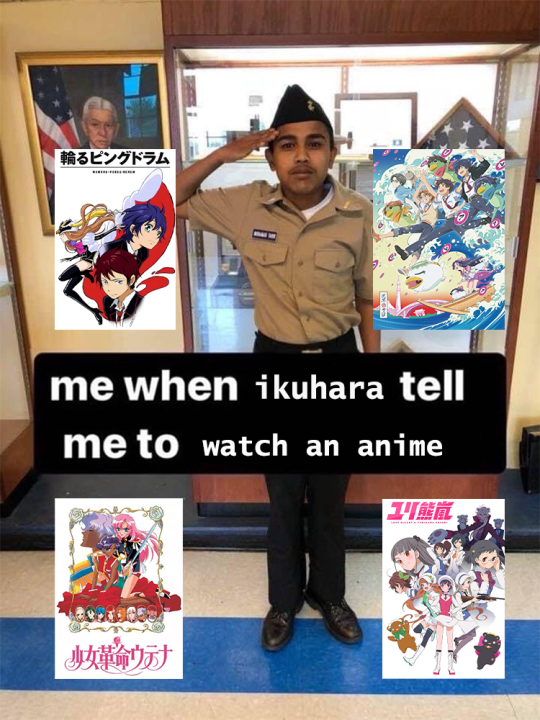
#havent seen half of these yet but am very much planning to do so#kunihiko ikuhara#ikuhara#mawaru penguindrum#penguindrum#sarazanmai#utena#revolutionary girl utena#yurikuma arashi#yuri kuma arashi#tedpost#tedit#ok thats the last of these
191 notes
·
View notes
Text
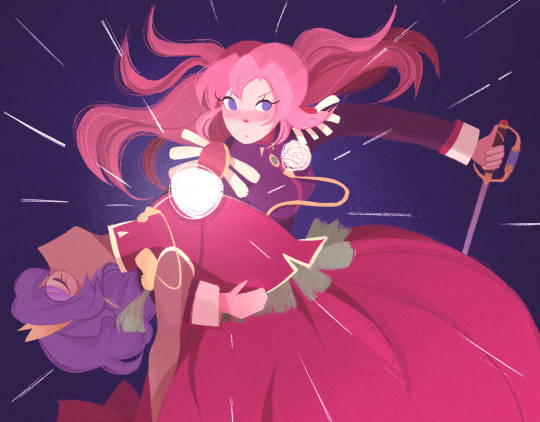
utena and anthy!
#my art#fanart#revolutionary girl utena#utena tenjou#utena#anthy himemiya#anthy#ikuhara#kunihiko ikuhara#utena fanart#lineless#lineless art#emily loves cookies#procreate#magical girl#mahou shoujo
2K notes
·
View notes
Text




revolutionary girl utena (1997)
episode 22: nemuro memorial hall
episode director: hayato date
#revolutionary girl utena#colors...#idk how to tag things i just wanted to keep this here!#we love a color coded flashback#ikuhara
295 notes
·
View notes
Text
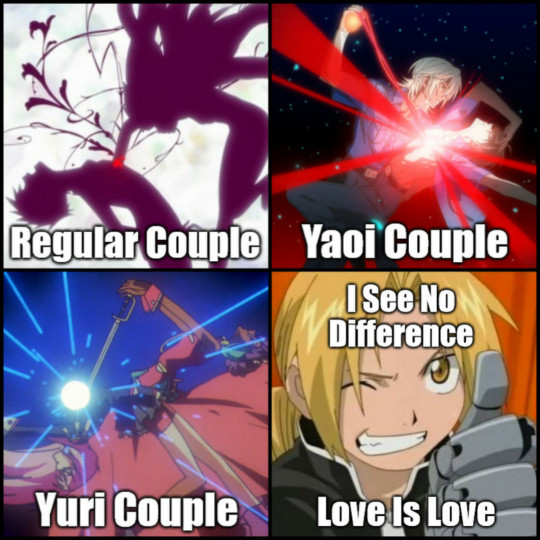
#penguindrum#sarazanmai#revolutionary girl utena#rgu#this took way too long to make 😭😭😭#im aware the first one is anything but regular im sorry#you could just do this with utena characters but im watching sarazanmai and ive had it up to here with ur chest object pully outy scenes#ikuhara
725 notes
·
View notes
Text
I see an assumption among western fans that RGU was at odds with wider anime culture, but I think people underestimate how much RGU had a home within the avant garde spheres of that time. RGU was somewhat niche if you compare it to popular franchises, but it's not like it was snubbed, it won awards when it came out. the work itself was signaling its influences and what kind of audience it wanted. hiring J. A. Seazer to do the music, the guy who did OSTs for Terayama works; references to earlier shoujo and classic western literature; etc. then you have all the high brow, high profile creator interviews--an interview between Ikuhara and an art critic was published in an academic magazine!
one of the more interesting reflections on Ikuhara is the interview with Nasu Kinoko, the creator of the FATE series. he gives an account of watching RGU as it came out in his 20s. it's rather telling.
—What was your impression of the first episode?
Nasu: My friends (all men, naturally) kind of reflexively rejected it: “What the hell’s with this artstyle?!” I was used to shoujo manga, so my first impression was “I like these character designs. But I guess it’s true that they’re a bit too aesthetic for anime…”
—You have a reputation for depicting women’s emotions, like in the Sakura route of “Fate/stay night” (Heaven’s Feel), or “Fate/EXTRA CCC”.
Nasu: I think having sisters was a big part of that. We had shounen manga and shoujo manga on the same shelf, and I read them the same. As I read more and more, the idea that “shounen manga are fun to read; shoujo manga have interesting stories” established itself in my mind when I was in elementary school. I always got the sense that shoujo manga depicted people’s inner workings more in its storytelling.
some men may have avoided RGU, but for those paying attention, shoujo already had a reputation as the most fertile corner of anime/manga. queer themes, stories of abuse, explorations of gender, none of these are unique to RGU. Mari Kotani writes that the work "brings to light the subversive potential of the shoujo genre"--it goes further than most works do, but does so by acting on the legacies given to it.
258 notes
·
View notes
Text

#mawaru penguindrum#himari takakura#fanart#screenshot redraw#gif#ikuhara#artists on tumblr#digital art#painting#drawing#room#background#interior#illustration#animation#illust#anime#artwork#art#pastel#cute#artists support#anime fanart#anime and manga
44 notes
·
View notes
Text
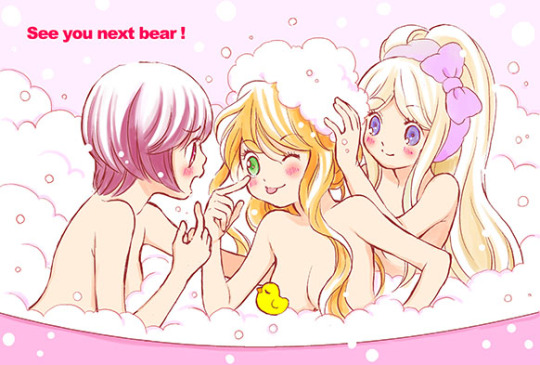
♡ See you next bear! ♡
#akiko's yuri kuma art is so precious#I love her style so much#yuri kuma#yuri kuma arashi#yurikuma#yurikuma arashi#lulu yurigasaki#kureha tsubaki#ginko yurishiro#ikuhara#kunihiko ikuhara
150 notes
·
View notes
Photo
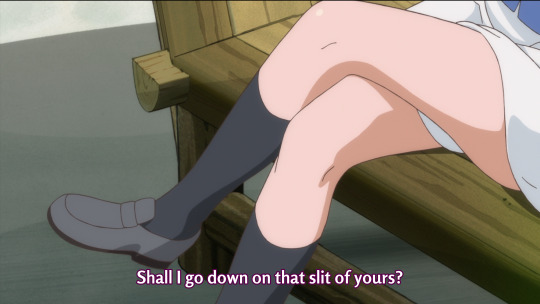

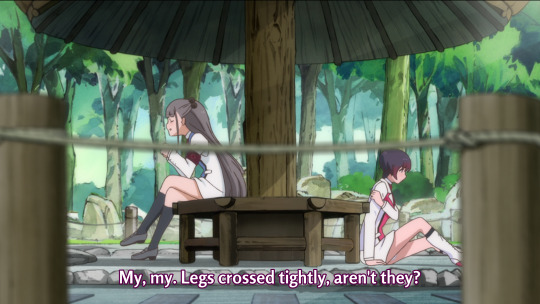
so i watched yurikuma arashi. remarkably this is far from the horniest moment in the show, though it was the only one that had me borderline weeping with laughter
273 notes
·
View notes
Text
Mawaru Penguindrum Phrases Breakdown
I've written a big long post breaking down some of the repeated phrases of the show Mawaru Penguindrum because rewatching it a year ago gave me brainrot. Hope those who r interested enjoy.
Alright this has been occupying my brain for so long it should've started paying rent so I've decided to finally write it all up. Some of these are my own thoughts, but a lot of these are pieces of interpretations that are floating out there on the web. I just didn’t find any one place that compiles them all and puts them together.
Mawaru Penguindrum is the first Ikuhara show I ever watched and something about it really changed my brain forever even though I didn’t really understand what I was watching the first time through (because I was in middle school). I love its surreality and the density of its visual metaphors that all feed into each other has me like an insane person complete with a red string conspiracy board (that will be a section later). It’s show that challenges the viewers to piece together concepts and leaves questions for them to answer on their own, some intended and some probably not as much. I admire the ambition and the commitment to exist in a space that's between trite judgements of black and white, good and evil, and to trust the viewer to really engage with the work.
In this blog post I’m going to break down some of the major catchphrases of the show because they exemplify how the visual/thematic density rewards viewers who spend the time to really engage with the material. It also personally fascinates me as someone who enjoys these puzzle box-type themes and narratives that have the answers staring you right in the face from the beginning, but you just didn’t have the tools to understand what you were being cryptically told.
MAWARU PENGUINDRUM
We gotta start from the beginning and break down the title first of course.
MAWARU: spinning, turning, rotating - which brings themes like revolution and cycles to mind
It’s probably also nod to Revolutionary Girl Utena (though both shows share a lot of themes in examining and trying to challenge or examine societal norms, structures, and cycles).
PENGUINDRUM:
First layer of understanding: the physical diary that the Kanba and Shoma must find (actually it’d be more accurate the say the first layer is just being like “this is a nonsense word” but I digress)
Let’s do another layer of breakdowns -
PENGUIN: Flightless birds that belong neither to the land or the sea - chosen to represent the idea of the “unchosen.” Those in Antarctica need to rely on their community to survive in their harsh environment, huddling and rotating (mawaru…) to keep everyone warm.
There’s a common rumor out there that Ikuhara said penguins were also chosen because it sounds like “pingguo” which is apple in Chinese. Honestly I believe it because he seems to be the kind of person to say stuff like that, but also I’ve never found a source on this.
DRUM: An instrument that keeps a steady beat…like a heartbeat…badum tss. The apple in the show always being red reinforces this association.
Second layer of understanding: When the diary is lost, what the “penguindrum” is exactly becomes more nebulous and we start operating in a metaphor-as-reality world. In terms of visual representation in the show, the “penguindrum” is the “apple” the siblings have been sharing among themselves.
The Penguindrum being represented by an apple means there’s a lot of associations tied into its image. In the show, apples are a visual metaphor for being "chosen". Classically, apples are also the fruit of original sin (like fate…not to jump ahead but remember this for later) - which ties into the concept of “punishment” that Himari's fate is framed as.
Because of the breakdown from earlier (and also all the chest puncturing imagery in the show lol), we can also understand the Penguindrum to be associated with the heart - often in turn associated with love, which is a very loaded concept to dig through, especially as presented in the show (romantic, platonic, and/or familial connections; sacrifice, community, etc.)
Taking these all together, a third layer of interpretation is that Mawaru Penguindrum refers to the cycle (Mawaru) of sharing bonds/fate/connection/love (Penguindrum) between the show’s characters.
SURVIVAL STRATEGY
This phrase is what signals the Princess of the Crystal's presence and initiates the transformation sequence that takes the brothers into a surreal world.
The common reading of this is again the reference of penguins needing to huddle together to survive the cold of Antarctica. They rotate who bears the cold wind of the outside circle in order for the whole flock to survive. Basically, we need the help and support of each other to survive the cold winds of an uncaring society.
While thinking on this phrase, I was struck by how every character’s drive in the show can be explained as “survival strategies” they learned as children. Perhaps it’s a bit of a stretch to apply it in the way this phrase is used in psychology, but I do think it at least refers to the ideology characters take on as children due to their traumatic childhood events or from flawed role models.
Ringo’s “survival strategy” is the most explicitly stated in the show: in episode 6, she believes her parents are on the verge of divorce because she is not Momoka - therefore to keep her family together she resolves to become Momoka.
The origin of Kanba and Himari’s core approaches to life appear in the flashbacks of episodes 5 and 9 respectively. The Takakura parents each protect the two adopted children from injury by glass, a nod to their original unchosen fate. In doing so, they’re set up as the direct masculine and feminine role models that the two children learn from and model themselves on. I’m not sure it’s accurate to say that the lessons they internalize are strictly “wrong,” because I don’t think Penguindrum is interested in discussing characters like that, but they definitely are flawed.
Shoma deals with guilt from his family’s “sin” and grapples with the idea of taking responsibility for his parents’ actions.
Tabuki and Yuri still believe themselves to be “unloved children” and that’s why they keep pursuing Momoka or seeking revenge for her. They struggle to believe there’s a place in the world for them without their savior there.
Masako is a pretty clear one as well - she internalizes her grandfather’s habits and beliefs in order to try and fit in, even if it never earned her any respect in his eyes.
The childhood of the characters in the show informed how they viewed the society they grew up in, and what they needed to do or become in order to survive.
YOU WHO WILL NEVER AMOUNT TO ANYTHING, FIND THE PENGUINDRUM
Honestly I’m obsessed with the phrases that first sound like absolute nonsense, but cool absolute nonsense. This is the phrase that made me want to write this blog post in the first place.
The phrase is the call-to-action by the mysterious Princess of the Crystal. On first viewing, we can interpret so little of this sentence it’s really just a tool to sound cool and give us a snapshot of the Princess of the Crystal’s personality - haughty, cryptic, and generally unhelpful. It gives Kanba and Shoma a goal, even though neither us nor them understand what the hell it is.
YOU WHO WILL NEVER AMOUNT TO ANYTHING
As the show goes on, the themes and concepts around being a chosen or unchosen child arise. Those who are unchosen and unloved go to the Child Broiler to be turned into glass. This is semi-metaphorical and semi-literal (diegetic might be an appropriate word in a weird way) - metaphorically it can be interpreted as becoming a forgettable, blandly molded member of society, though being processed is acknowledged more like death in the show. In some ways that’s still accurate.
Each of the siblings started without an apple, literally-metaphorically starving of love and unchosen - originally they were fated to never amount to anything.
FIND THE PENGUINDRUM
Obviously this initially refers to the diary in the show, but as we broke down earlier PENGUINDRUM eventually takes on a more loaded meaning akin to love, bond, and connection.
So over the course of watching the show, the phrase transforms from a one-sided order and condemnation to a call to action. Put all together with a little more elaboration: You who were unchosen and unloved from the beginning, in order to survive in this harsh world you must find love and connection with people to share your life with, through good and bad.
I COME FROM THE DESTINATION OF YOUR FATE
Time to bust out the conspiracy red string board, literally-metaphorically.
The Red Line is the literal, metaphorical, and thematic spine of the show. There are two big starting categories for viewing The Red Line in the show, which then mix together to create new meanings as the show references it through imagery and dialogue.
First up, the Red Line refers to an actual train line that the entire show takes place upon, the Tokyo Metro Marunouchi line. The entire show is structured around the train line which starts with the Ogikubo Station and ends at Ikebukuro, with important locations being linked with the actual train stops. It was one of the train lines attacked in real life as part of the Tokyo subway sarin attack in 1995 which the Pingu group’s terrorist attack in the show is a very transparent reference to. This single point in time in 1995 is the origin of almost everything in Mawaru Penguindrum, and in fact almost half the cast is born on the exact day the Pingu group attacks, just to emphasize how closely their fates are tied to the attack.
Second, the Red Line can be seen as a representation of fate, as in the red string of fate. Fate and destiny are concepts brought up over and over again, with Shoma and Ringo having their own monologues about it in the first two episodes (and Kanba having his much later). The visualization of the red string of fate can also be seen in the ending animations.
Somewhere in between is the Red Line as the metaphor of a train to visualize fate. Fate is something that can’t be changed - just like how trains run on fixed tracks with fixed destinations. Of course this is challenged in the show - Momoka even uses the metaphor of changing train tracks to explain her ability.
Now, fate has its own set of associations, such as: destiny, love, connection, bond (hmm familiar), as well as superstitions like fated meetings, fated demises, divine determination.
These can start branching off into concepts like blessings, sins, retribution, and karma (cue the Fate monologues again). And now we start getting back into the idea of cycles: downward spirals of getting what one deserves for their actions, passing on one’s sins to those after you - or virtuous cycles of doing good deeds and passing love and care forward.
Often in discussions of fate, familiar questions arise. Does the beginning determine the end? Is the end fated from the beginning? And so the Red Line becomes the Red Circle, another visual device seen throughout the show. It’s all over the motion graphics of the show and appears around the train stations as well as around ‘95’, referencing the originating incident of it all - the beginning of the Takakura family that determined their end.
What I love about this use of the Red Line is that however you progress your understanding of the its importance to the show, it all helps you further understand any concept Mawaru Penguindrum is discussing. This coherence and repetition of visual metaphors is what allows the show to feel more texturally and thematically cohesive even when it starts getting loose in a plot sense.
(Going back to the initial phrase, I COME FROM THE DESTINATION OF YOUR FATE is said by the Princess of the Crystal in her introduction monologue. It likely lampshades the predetermined ending that the Takakura brothers are so desperately trying to avoid. But also, there is a much funnier, much more literal interpretation I enjoy - Ikebukuro, the last stop on the train line, is where the aquarium the siblings visit is. It’s also where the brothers bought the novelty penguin hat for Himari. So the Princess of the Crystal literally came from the destination (last stop) of your fate (the red line)!)
LET’S SHARE THE FRUIT OF FATE
This turns out to be the secret key phrase needed to activate the diary in order to change the tracks of fate, which Ringo uses at the end of the show in order to prevent another train attack from succeeding.
It’s probably not too hard to piece together what the fruit of fate is after all of this. In a sense, this phrase is just a repeat of Mawaru Penguindrum, just as an actual sentence with a bit more coherence.
I’ll bear your burdens and you’ll bear mine, and in doing so, let us forever be connected.
Wow, finally expunged these thoughts from my brain. Maybe somewhere in me there's still something left for a discussion on how the show uses repeated imagery and visual metaphor to communicate information and associations to the viewer that are vital to actually understanding what's going on because it's a narrative that half exists a non-literal thematic space but for now:
Thanks for reading!
#mawaru penguindrum#ikuhara#mpd#finally committed to writing this after dying from the booster side effects#i'm sure there might be translation differences from the original japanese but I think my logic will still hold
98 notes
·
View notes
Text

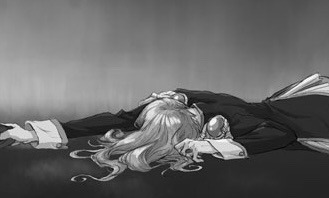

Noble and reckless hero
From 2015
#revolutionary girl utena#utena#anthy himemiya#utena tenjou#rgu spoilers#sku spoilers#shojo kakumei utena#Ikuhara#kunihiko ikuhara#fanart
537 notes
·
View notes
Text

0 the Fool
#just a simple illustration#i think i might make this a series tho#digital art#art#artists on tumblr#artoftheday#revolutionary girl utena#rgu#shoujo kakumei utena#utena tenjou#anthy himemiya#sku#ikuhara#utena#tarot cards#tarot#anime#animanga#fanart#digital artist#digital fanart#illustration#tenjou utena
1K notes
·
View notes
Text
sometimes i wish i was an utena fan in the 90s so i could watch the show in real time. like yes, i get to watch whenever i want (for free) now, but to watch utena on CHRISTMAS FUCKING EVE?????
#like that shit go so hard#this is a half joke#im happy to be in the era where i don't have to ask people who speak japanese for subs and having to wait for re-runs if i missed an episod#but also#the last episode#aired on CHRISTMAS EVE#CHRISTMAS EVEEEEE#like i would've loved to watch that in real time#idek if utena even aired on tv#there's nothing special about the fact that this aired on christmas eve. i just like christmas#but still#ikuhara#my love#you truly did your big one#revolutionary girl utena#rgu#shoujo kakumei utena#sku
40 notes
·
View notes
Photo

Yurikuma Arashi manga illustration by Kunihiko Ikuhara
186 notes
·
View notes
Text

I fhcki g can't with these two with their gender flipped Jane and Daria asses
-Vanna
130 notes
·
View notes
